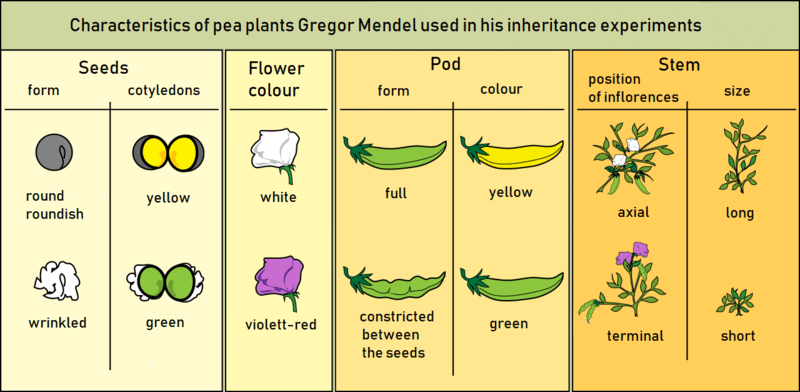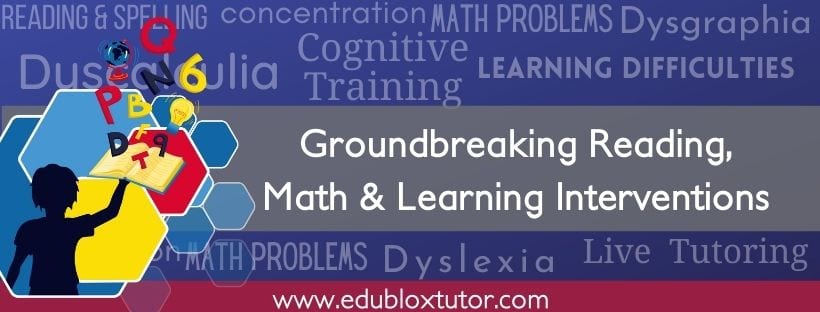Deer momee and dadee
I bo not wont to do to shool eny more becouse the children ar lafing at me. I canot reed pleese help me
your sun david
David has what his father has

David is not a slow learner. In fact, according to the evaluations of a few professionals, he is pretty intelligent. Yet, he certainly has a problem and shares it with millions of other children and adults – and his father. David has dyslexia.
The word “dyslexia” comes from Greek and means “difficulty with words or language.” Perhaps the simplest modern definition of dyslexia is that it is a difficulty in learning to read and write, particularly in spelling correctly and expressing one’s thoughts on paper.
Dyslexia is a subject that belongs to the study field of learning disabilities, and its cause is widely accepted to be neurological or genetic. Some researchers blame a supposed neurological dysfunction on brain damage incurred before, during, or after birth. Others hold that the neurological dysfunction is genetically determined and inherited from generation to generation. They support this view by referring to many studies indicating that there is frequently a family history of learning disabilities.
Dyslexia runs in families, studies show
DeFries and colleagues (1978) initiated a large family study of dyslexia. They recruited a sample of 133 children identified by teachers as having significant reading difficulty. The researchers tested them in the laboratory with an extensive battery to confirm their reading problems and related cognitive disabilities. A matched group of 125 children with no reading problems was also identified and tested. The parents and siblings of both groups were also assessed.
The main result of the DeFries family study was clear: there was substantial evidence for the familial transmission of dyslexia. The relatives of the children ascertained with dyslexia were significantly more likely to also have reading problems compared to the relatives of children with normal-range reading abilities.
The relative contributions of genetic influences can be dissected in twin studies. It has been shown robustly that concordance for a qualitative diagnosis of dyslexia is significantly higher in identical twins with a virtually identical genetic makeup than in non-identical twins who (like ordinary siblings) share about half of their segregating alleles. A large-scale study of twins with dyslexia yielded a concordance rate of 68% in identical twins, compared with 38% in non-identical twins, indicating a substantial genetic component (DeFries & Alarcón, 1996).
Data from 15 studies examining children at familial risk for dyslexia estimated that, on average, 45% of children with a family history eventually show characteristics of dyslexia (Snowling & Melby-Lervåg, 2016). Estimates ranged from 29% for a Dutch study to 66% for an English study.
The Dyslexia Research Trust collected nearly 400 families with at least one dyslexic child and detected a strong signal on the short arm of chromosome 6, with the most robust linkage on chromosome 18. After identifying the chromosome 6 and 18 sites, the Trust revealed strong associations between one particular gene, KIAA0319, and low performance in most reading, spelling, orthography, and phonology tests.
Several other chromosomes and genes have been implicated in dyslexia.
Dyslexia not a Mendelian disorder

In 1865, Gregor Mendel presented the results of his experiments with nearly 30,000 pea plants to the local natural history society. He demonstrated that traits are transmitted faithfully from parents to offspring in specific patterns.
In medicine, introductory courses often illustrate genetics using a specific condition, such as Huntingdon’s disease, where a rare mutation in a single gene causes neurological degeneration. However, the genetic basis for many disorders is quite different from this.
Common medical conditions such as heart disease, allergies, asthma, and diabetes all run in families, but family pedigrees do not usually show a Mendelian inheritance pattern. Instead, there appear to be many genetic variants that individually have a small influence on the likelihood of developing the condition, but which in combination can create a high risk for the disorder.
The same holds true for dyslexia, says Bishop (2015). Dyslexia, she says, is not a classic Mendelian disorder caused by a mutation in a single gene. Instead, it appears to involve combined effects of many genes and environmental factors, each of which has a minor influence, possibly supplemented by rare variants that have larger effects but apply to only a minority of cases.
Statistics must be interpreted
One should also not lose sight of the fact that statistical evidence is often no more than circumstantial. Circumstantial evidence must always be interpreted.
One of the main objections to studies on genetics and dyslexia is that the statistics may be misinterpreted (Bishop, 2015). The fact that dyslexia “runs in families” cannot necessarily be attributed to genetics but may be caused by the fact that the family members share the same unique environment.
It may be helpful to present an example of how unwise it can be to base conclusions on statistics only. Until recently, the inhabitants of a town not too far from my hometown were allowed to use well-water for domestic purposes. When used as drinking water, the water caused a discoloring of the front teeth. Except in the case of a person with dentures, all the members of the family — father, mother, and children — would then have discolored front teeth. The concordance must have been 100%. As already indicated, however, the discoloring of the teeth was not caused by genetics but by the circumstances and conditions that the family members shared: they all drank the same water.
Don’t lose sight of the environment (learning)
No one will deny that genes affect human capabilities and talents. However, determining the relative importance of the role of genes and the environment will forever be impossible. Take Mozart as an example. He was one of the most brilliant musicians of all time. All his family members were musicians, and from birth, he was continually exposed to music. Suppose he had been adopted immediately after birth by other parents who played no music. Would we then have known about Mozart? It is possible but doubtful.
The brilliant work done by the late Shinichi Suzuki of Japan also shows how musical talent can develop through exposure. Suzuki trained thousands of violinists, who, from a very young age, took part in concerts lasting more than two hours, playing works by Mozart, Beethoven, and Liszt. He started stimulating these future violinists from before birth. Based on his research, Suzuki concluded that what a child becomes depends on education. “Talent is not an accident of birth,” he said.
The Glenwood State School
Research on the role of the environment in children’s intellectual development has shown that a stimulating environment can dramatically increase IQ. In contrast, a deprived environment can lead to a decrease in IQ.
A particularly interesting project on early intellectual stimulation involved 25 children in an orphanage. These children were seriously environmentally deprived because the orphanage was crowded and understaffed. Thirteen babies of an average age of 19 months were transferred to the Glenwood State School for mentally disabled adult women, and each baby was placed in a woman’s personal care. Skeels, who conducted the experiment, deliberately chose the most deficient orphans to be placed in the Glenwood School. Their average IQ was 64, while the average IQ of the 12 who stayed behind in the orphanage was 87.
The children were placed in open, active wards in the Glenwood State School with the older and relatively brighter women. Their substitute mothers overwhelmed them with love and cuddling. Toys were available, they were taken on outings, and they were talked to a lot. The women were taught how to stimulate the babies intellectually and elicit language from them.
After 18 months, the dramatic findings were that the children who had been placed with substitute mothers and had therefore received additional stimulation, on average, showed an increase of 29 IQ points! A follow-up study was conducted two and a half years later. Eleven of the 13 children originally transferred to the Glenwood home had been adopted, and their average IQ was now 101. The two children who had not been adopted were reinstitutionalized and lost their initial gain. The control group, the 12 children who had not been transferred to Glenwood, had remained in institution wards and now had an average IQ of 66 (an average decrease of 21 points).
However, the difference in the quality of life these two groups enjoyed is more telling than the increase or decrease in IQ. When these children reached young adulthood, another follow-up study brought the following to light: “The experimental group had become productive, functioning adults, while the control group, for the most part, had been institutionalized as mentally retarded.”
High heritability does not imply immutability
From the example above and many other cases in the literature, I contend that, even if it were possible to inherit dyslexia, a human being is not slave to their genes but can learn to overcome their learning problems.
People often assume that the child will be untreatable if genetic effects are found. Yet, high heritability does not imply immutability. Genetic research does not lead us to write off children who are poor readers but rather to recognize that they may need more individualized instruction tailored to their specific needs (Bishop, 2015).
Human life can be compared to a game of cards. At birth, every person is dealt a hand of cards — their genetic makeup. Some receive a good hand; others a less good one. Success in any game, however, is almost always a matter of erudition. It is undeniably so that certain innate qualities often will give one person an advantage over another in a specific game. However, nobody will ever become a champion at any game without having learned the game and without regular and rigorous practice.
In the same way, the outcome of the game of life is not solely determined by the quality of a person’s initial hand of cards but also by how they take part in the game of life. Their ability to take part in the game of life satisfactorily, perhaps even successfully, will be determined largely by the quality and quantity of education they enjoy.
Dyslexia success stories
Below are stories of eleven children who received specialized help and overcame their dyslexia symptoms.
Edublox offers cognitive training and live online tutoring to students with dyslexia, dysgraphia, dyscalculia, and other learning disabilities. Our students are in the United States, Canada, Australia, and elsewhere. Book a free consultation to discuss your child’s learning needs.
.
References:
Bishop, D. V. M. (2015). The interface between genetics and psychology: Lessons from developmental dyslexia. Proceedings of the Royal Society B, 282.
DeFries, J. C., & Alarcón, M. (1996). Genetics of specific reading disability. Mental Retardation and Developmental Disabilities Research Reviews, 2: 39–47.
DeFries, J. C., Singer, S. M., Foch, T. T., & Lewitter, F. I. (1978). Familial nature of reading disability. The British Journal of Psychiatry, 132(4): 361–7.
Snowling, M. J., & Melby-Lervåg, M. (2016). Oral language deficits in familial dyslexia: A meta-analysis and review. Psychological Bulletin, 142(5): 498–545.

